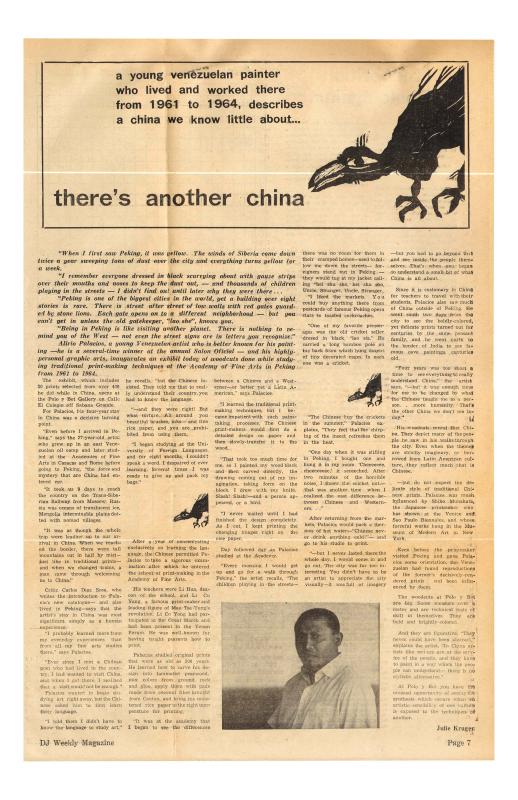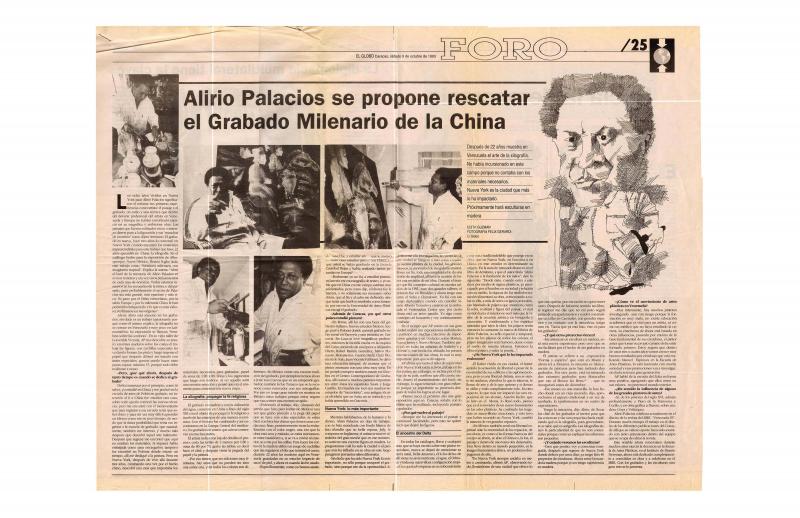The Venezuelan writer Igor Molina’s article about the graphic works produced by the Venezuelan artist Alirio Palacios (b. 1944) sheds light on two important stages in the latter’s development as an artist: his training as a printer in China and Poland. Molina shares Palacios’ views on his work during those periods; he also quotes the remarks made on that same subject by the artist and critic Alejandro Otero (1921–90), who said that the work that Palacios brought back from Warsaw was among the “most dense, convincing, and beautiful in all of Venezuelan art.” Molina goes on to describe the prints that Palacios produced in China as “amazing and violent,” saying that they provide insight into this artist’s deepest feelings. In another interesting insight, the article mentions Palacios’ reason for returning to Venezuela from China, a country he greatly admired. He explains that he could no longer feel the violence of the Venezuelan countryside: “the green, dry land, the devastation and death, the silence at night, the cruelty and the poetic quality (…) I cannot create a far-off reality.”
For further information on this subject, see the articles by Olga González “Mezzotintas de Alirio Palacios: El final del aprendizaje gráfico” [doc. no. 1156997], and “Regresa a su país uno de los grabadores más importantes de América Latina” [doc. no. 1155203]; the article by Julie Kruger “There’s another China” [doc. no. 1155219]; the article by Yasmín Monsalve “Soy un gran aliado de mi país: Alirio Palacios expone xilografías en la Freites” [doc. no. 1155733]; Edith Guzmán’s interview, “Alirio Palacios se propone rescatar el grabado milenario de la China” [doc. no. 1155809]; and the article by Lenelina Delgado about the crisis at the INCE (Instituto Nacional de Cooperación Educativa) de Diseño, where Palacios was a teacher, “Alirio Palacios: El estado tiene la responsabilidad del futuro del Centro de Diseño” [doc. no. 1155596].






